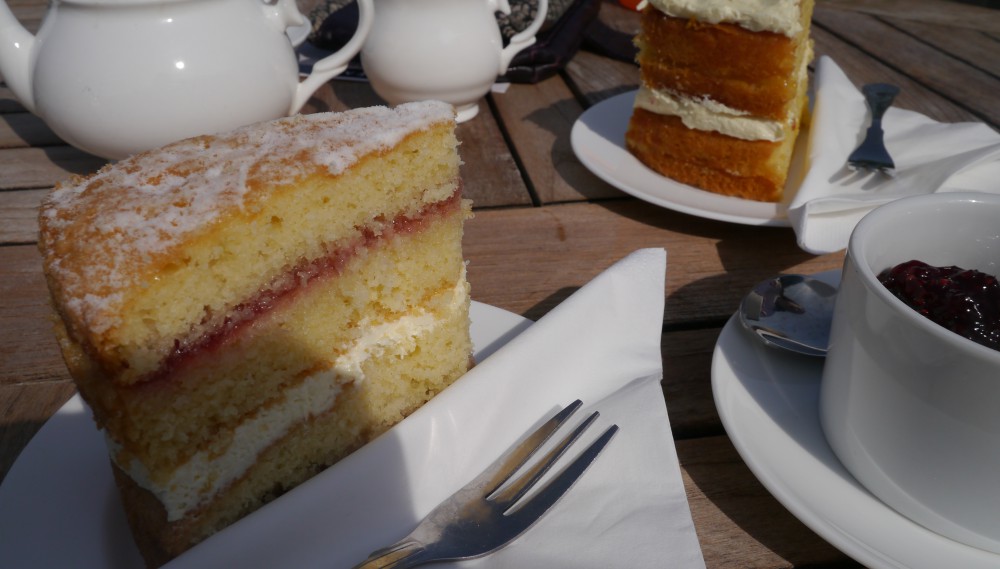Look at any modern recipe: what do you see? A list of ingredients, in the order in which they are needed; an instruction on the oven temperature so you can get things warming up; and a list of instructions, again in order. You may even get some nice asides like ‘Back to the frosting’, or ‘you can add some more zest here if you like’ just to give the friendly, knowing touch.
These details – and perhaps more importantly – the logical way in which they are presented, are an invaluable part of baking from a recipe. It wasn’t always so. In baking recipes from the eighteenth century instructions were usually in one block of text, with no separating out of the ingredients at all. Oven instructions were vague to our modern eye – ‘moderate’ or ‘hot’ (the modern Aga user will appreciate this of course, but most of us want a precise number in centigrade, farenheit or gas mark). Instructions like ‘bake until it is done’ were not uncommon, and you get general impression that authors were writing for bakers who already knew what they were aiming for. It wasn’t until Eliza Acton’s Modern Cookery for Private Families (link to free ebook) which was published in 1845, that a nod was given to the way the cook or baker read and used the recipe. Interestingly, the result was the other way round from the one we use today: recipe summary first, then ingredients and cooking times (the thinking being that the cook would want to read through the method first, before needing to know her ingredients).
I decided to try out what this different style felt like for a modern baker. The recipe I selected was the Sponge Gingerbread from Catherine Beecher’s Miss Beecher’s Domestic Receipt Book (available here) published in 1846 as a companion to her Treatise on Domestic Economy for the Use of Young Ladies at Home and at School (I mentioned it previously here). I have to admit that I picked it largely because it looked straightforward and didn’t require any difficult ingredients or baking methods. Here it is:
Sponge Gingerbread
One cup of sour milk
One cup of molasses
A half a cup of butter
Two eggs
One and a half teaspoonful of saleratus
One great spoonful of ginger
Flour to make it thick as pound-cake
Put the butter, molasses, and ginger together, and make them quite warm, then add the milk, flour and saleratus, and bake as soon as possible
Yep, that’s it. Still, I felt confident. Sour milk, I found, could be substituted with buttermilk, or some milk with vinegar or lemon juice added to it to make it curdle. Saleratus was an early raising agent and could be swapped for an equal measure of bicarbonate of soda/baking soda. And I know how thick a pound cake batter is, right?
Well, wrong on several counts. First, I made the mistake of assuming that the ingredients were listed in the order in which I needed them – despite reading through the recipe first as Miss Acton would have instructed. I’d already put the milk in the pan before realising my mistake – luckily an easy one to rectify. Then I had a little uncertainty over the thickness of the batter – despite my prior (over) confidence. And lastly, I had no idea how long to bake it for, or for how long, and had to consult Nigella.
So all in all, quite an instructive experience. Catherine Beecher was writing for women who might NOT have a lot of expertise in the kitchen, and she was keen to teach them scientific rules for the kitchen. But even in this situation, she could assume that they could make an educated guess as to oven temperature and ‘done-ness’ (though see her other advice here on how to do that). She also clearly had higher expectations as to initiative, memory and common sense than I was able to provide, as she did not feel the need to list her ingredients in the order they were used. The end result though? Well worth it – the closest I have ever come to a home-made Macvities’ Jamaican Ginger Cake. And that’s high praise. But can I find a single photo of it? I cannot. I’ll just have to make another…

This was so interesting! I think I’d have approached it in the same spirit as you, but would definitely have had the same wobbled! Glad it ended well in the end! Lx
LikeLike